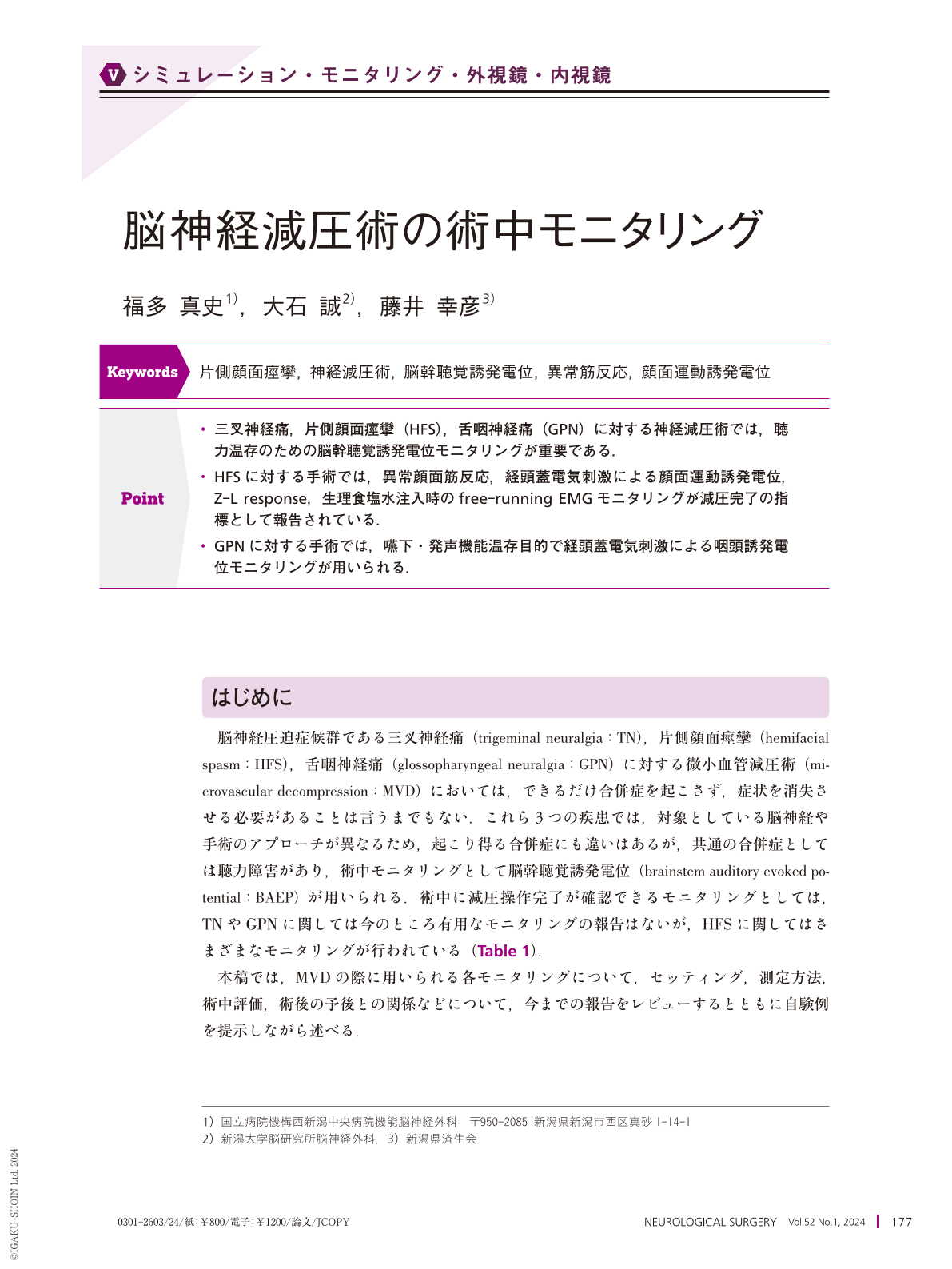Japanese
English
- 有料閲覧
- Abstract 文献概要
- 1ページ目 Look Inside
- 参考文献 Reference
Point
・三叉神経痛,片側顔面痙攣(HFS),舌咽神経痛(GPN)に対する神経減圧術では,聴力温存のための脳幹聴覚誘発電位モニタリングが重要である.
・HFSに対する手術では,異常顔面筋反応,経頭蓋電気刺激による顔面運動誘発電位,Z-L response,生理食塩水注入時のfree-running EMGモニタリングが減圧完了の指標として報告されている.
・GPNに対する手術では,嚥下・発声機能温存目的で経頭蓋電気刺激による咽頭誘発電位モニタリングが用いられる.
During microvascular decompression(MVD)for hemifacial spasm(HFS), trigeminal neuralgia(TN), and glossopharyngeal neuralgia(GPN), brainstem auditory-evoked potential monitoring is widely used to preserve hearing function.
In MVD for HFS, abnormal muscle response monitoring is useful for identifying the offending vessels compressing the facial nerve and confirming the completion of decompression intraoperatively. The amplitude of facial motor-evoked potential by transcranial electrical stimulation in the orbicularis oculi muscle is reported to decrease after completing MVD. The Z-L response(ZLR)probably confirms the true offending vessels by stimulating the culprit vessels; then, the ZLR could disappear after decompressing the offending vessels away from the compression sites. Spontaneous electromyographic activities obtained from the mentalis muscles by injection of saline into the facial nerve reportedly decreased after MVD compared with those before MVD.
In MVD for the GPN, glossopharyngeal motor-evoked potential by transcranial electrical stimulation is used to preserve swallowing function and not to assess the completion of MVD. Because MVD for both the TN and GPN can result in normalization of the hyperactivity of the sensory nerve, it may be difficult to develop any monitoring to confirm the completion of MVD during surgery.

Copyright © 2024, Igaku-Shoin Ltd. All rights reserved.


